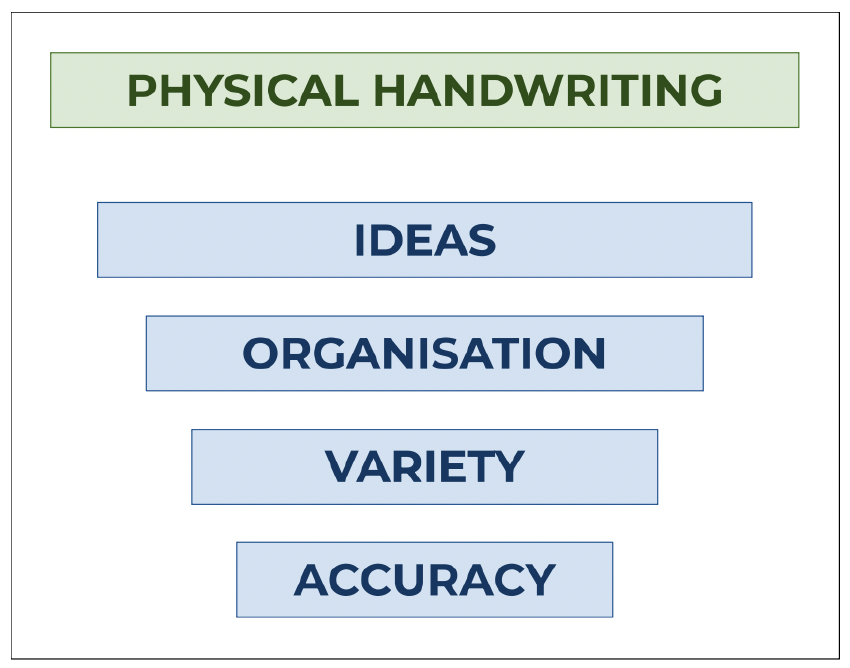CONVENTIONS IN LISA
LISA provides a framework or 'rubric' to define the mechanics of writing. Its rubric consists of conventions, i.e. a ‘way’ that things are normally done or an unwritten agreement about how we do things. LISA has five conventions:

- PHYSICAL HANDWRITING
We form shapes (letters, numbers, punctuation symbols) and group them in certain ways. Later in school (and life) we use computers for this.
- IDEAS
We share ideas and detailed information about them.
- ORGANISATION (for understanding)
We organise (structure) our writing to help readers follow our ideas and understand us.
- VARIETY (for effect)
We use a variety of words and structures to add impact and effect to our writing.
- ACCURACY
We spell correctly, and use punctuation and grammar accurately to help others understand our writing.
LISA doesn't currently assess students' physical handwriting, though this is part of our development pathway.
NOTE:
Writers can deliberately break conventions to add effect to their writing.
THE CONVENTIONS IN DETAIL - SUBCONVENTIONS
When it's marking students' work, LISA goes into more details breaking the conventions into 'sub-conventions' and then more specific criteria within each sub-convention. We currently only provide feedback based on the conventions. However, for teachers information, the sub-conventions are:
PHYSICAL HANDWRITING (not currently assessed)
- FORM
We form letters, numbers and punctuation symbols. We write some letters on, above or below the line. - DIRECTION
We write left to right, and top to bottom. - SPACING
We group letters together to form words, we leave spaces between words and we write across 2 or more lines.
IDEAS
- IDEAS
We produce ideas. - ELABORATION
We provide details about our ideas, e.g. facts, examples, explanations, or quotes.
ORGANISATION (for understanding)
- OVERALL STRUCTURE
Writing has a beginning, middle and end. - SEQUENCE OF IDEAS
We put our ideas in order to help readers understand and remember them. - SENTENCES AND PARAGRAPHS
We use sentences and paragraphs to help order and group our ideas.
VARIETY (for effect)
- VOCABULARY
We use a variety of words. - SENTENCE VARIETY
We use a variety of sentences. - LANGUAGE
We use a variety of language features. - FORMALITY
We write formally or informally, as appropriate.
ACCURACY
- SPELLING
We spell words accurately. - PUNCTUATION
We use punctuation correctly. - SYNTAX
We follow grammatical conventions correctly.
